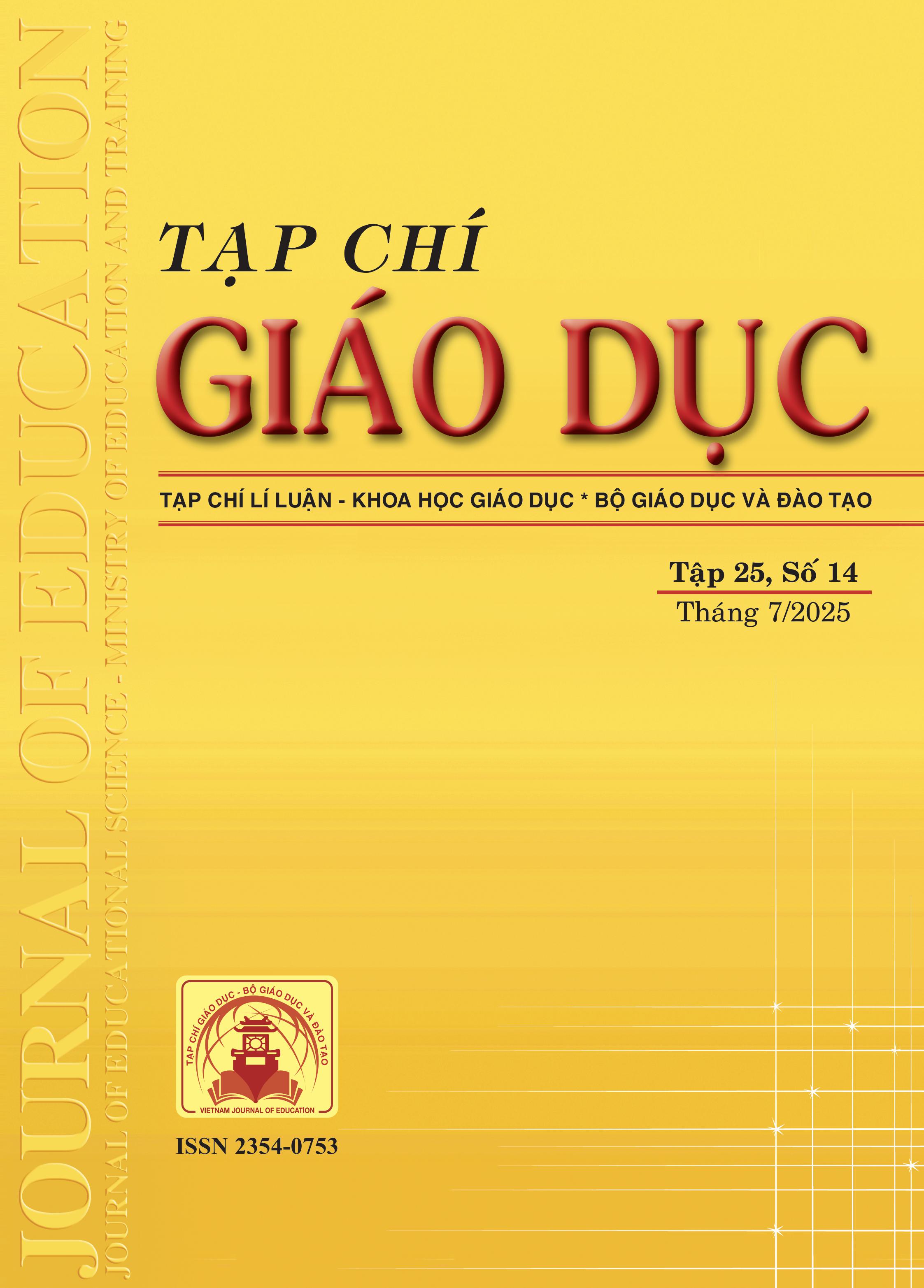Mối quan hệ giữa chất lượng dịch vụ giáo dục đại học với sự hài lòng của người học trong bối cảnh hiện nay
Tóm tắt
Among the important factors that contribute to promoting the position, prestige and the number of learners to higher education institutions, learner satisfaction is considered a key factor. This article explores the relationship between the quality of higher education services and the satisfaction of learners. The research shows that the quality of higher education services directly affects learner satisfaction, thereby affecting the decision to choose a university, a major and the level of attachment to the university. The study also analyzes a number of aspects of this relationship to accordingly propose some appropriate measures to improve the quality of higher education services, the efficiency and competitiveness of higher education institutions in the current context. This helps create values and brands for higher education institutions, contributing to constantly improving the quality of human resources, effectively serving the cause of socio -economic development of the country.
Tài liệu tham khảo
Abdullah, F. (2018). Measuring service quality in higher education: HEdPERF versus SERVPERF. Marketing Intelligence & Planning, 24(1), 31-47. https://doi.org/10.1108/02634500610641543
Alves, H., & Raposo, M. (2007). Conceptual model of student satisfaction in higher education. Total Quality Management & Business Excellence, 18(5), 571-588. https://doi.org/10.1080/14783360601074315
Barr, R. B., & Tagg, J. (1995). From teaching to learning - A new paradigm for undergraduate education. Change: The Magazine of Higher Learning, 27(6), 12-26. https://doi.org/10.1080/00091383.1995.10544672
Đặng Ứng Vận, Giản Hoàng Anh (2022). Năm xu hướng của giáo dục đại học thế giới và một số kết quả kiểm định chất lượng giáo dục ở các trường đại học tại Việt Nam thời gian gần đây. Tạp chí Khoa học và Công nghệ, Trường Đại học Hòa Bình, 06, 74-82.
Goh, P. S., & Sandars, J. (2020). A vision of the use of technology in medical education after the COVID-19 pandemic. MedEdPublish, 9(1), 49. https://doi.org/10.15694/mep.2020.000049.1
Grönroos, C. (2000). Service Management and Marketing: A Customer Relationship Management Approach (2nd ed.). Wiley.
Harvey, L., & Green, D. (1993). Defining quality. Assessment & Evaluation in Higher Education, 18(1), 9-34.
Hill, F. M., Lomas, L., & MacGregor, J. (2003). Students’ perceptions of quality in higher education. Quality Assurance in Education, 11(1), 15-20. https://doi.org/10.1108/09684880310462047
Kashif, M., Ramayah, T., & Sarifuddin, S. (2016). PAKSERV - measuring higher education service quality in a collectivist cultural context. Total Quality Management and Business Excellence, 27(3-4), 265-278. https://doi.org/10.1080/14783363.2014.976939
Kotler, P., & Fox, K. F. A. (1995). Strategic marketing for educational institutions (2nd ed.). Prentice Hall.
Lê Đức Tâm, Trần Danh Giang (2013). Mối quan hệ giữa chất lượng dịch vụ đào tạo và sự hài lòng của sinh viên Trường Đại học Xây dựng miền Trung. Tạp chí Khoa học - Công nghệ Thủy sản, 2, 149-154.
Lee, M. C., & Hwan, I. S. (2005). Relationships among Service Quality, Customer Satisfaction and Profitability in the Taiwanese Banking Industry. International Journal of Management, 22(4), 635-648. http://dx.doi.org/10.1016/j.jaci.2012.05.050
Ngo Vu M., Nguyen Huan H. (2016). The Relationship between Service Quality, Customer Satisfaction and Customer Loyalty: An Investigation in Vietnamese Retail Banking Sector. Journal of Competitiveness, 8(2), 103-116 https://doi.org/10.7441/joc.2016.02.08
Nguyen, T. H. Y. (2013). Measuring Service Quality in The Context of Higher Education in Vietnam. Journal of Economics and Development, 15(3), 77-90. https://doi.org/10.33301/2013.15.03.05
Parasuraman, A., Zeithaml, V. A., & Berry, L. L. (1988). SERVQUAL: A Multiple-Item Scale for Measuring Consumer Perceptions of Service Quality. Journal of Retailing, 64, 12-40.
Phạm Thị Liên (2016). Chất lượng dịch vụ đào tạo và sự hài lòng của người học - Trường hợp Trường Đại học Kinh tế, Đại học Quốc gia Hà Nội. Tạp chí Khoa học, Đại học Quốc gia Hà Nội, 4, 81-89.
Tải xuống
Đã Xuất bản
Cách trích dẫn
Số
Chuyên mục
Giấy phép

Tác phẩm này được cấp phép theo Ghi nhận tác giả của Creative Commons Giấy phép quốc tế 4.0 .












